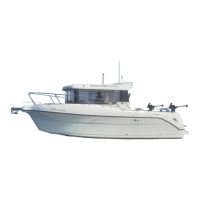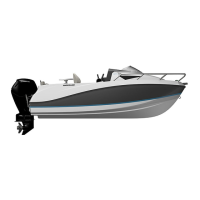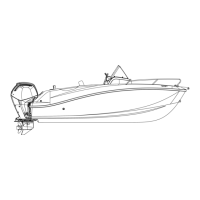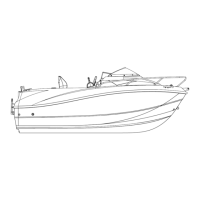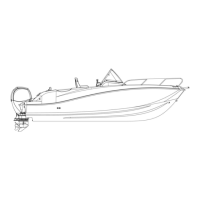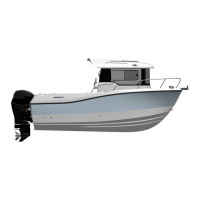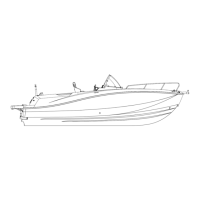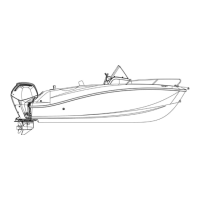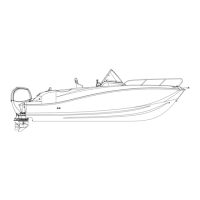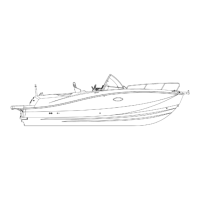Quicksilver 855WE — System & Component Overview and Operaon
40
Mechanical & DTS Controls
Engine trim
Engine trim (both engines)
“Throle Only” buon
Track pad
Single Engine DTS Control
Twin Engine DTS Control Twin Engine Mechanical Control
For the DTS control, the “Throle-Only” buon is located on the control funcon pad. To engage,
press the “Throle-Only” buon on the keypad when the engine is in neutral. A light located above
the “Throle-Only” buon will turn on and the green neutral light will begin to ash. When you place
the ERC in gear, the warning horn will beep, however, the propeller is not turning. To disengage,
return the ERC lever back to neutral and press the “Throle-Only” buon. The light located above the
“Throle-Only” buon will turn o and the green neutral light stops ashing and remains illuminated.
Moving the control lever forward from neutral engages the forward gear and throle advance.
Moving the control lever backwards from neutral engages the reverse gear and thrust. The throle
lever controls the RPM of the engine and the speed of the boat.
Power Trim & Tilt
The power trim, located on the side of the gear shi throle handle, allows you to raise and lower the
engine for trailering and launching the boat. It also allows you to adjust the engine to create the
opmum run angle for the boat to achieve best all around performance (fuel consumpon, speed).
Refer to the engine manufacturer’s manual for complete instrucons, informaon and warranty.
14. Emergency Engine Shutdown Switch
Your boat is equipped with an ignion shutdown safety switch. The switch is located at the helm next
to the engine keys. The ignion shutdown switch incorporates a shut-o switch and a lanyard. Before
operang the boat, one end of the lanyard must be connected to the shut-o switch while the other
end is connected to the operator. If an emergency arises where the engine must be shut down, pull
the lanyard cord to release it from the shut-o switch, which in turn shuts down the engine(s). This
switch is designed to shut the engine(s) o when the operator of the boat leaves the control staon,
either accidently by falling into the boat, or by being ejected overboard.
The lanyard should be long enough to prevent inadvertent acvaon. Do not let the lanyard become
entangled.
